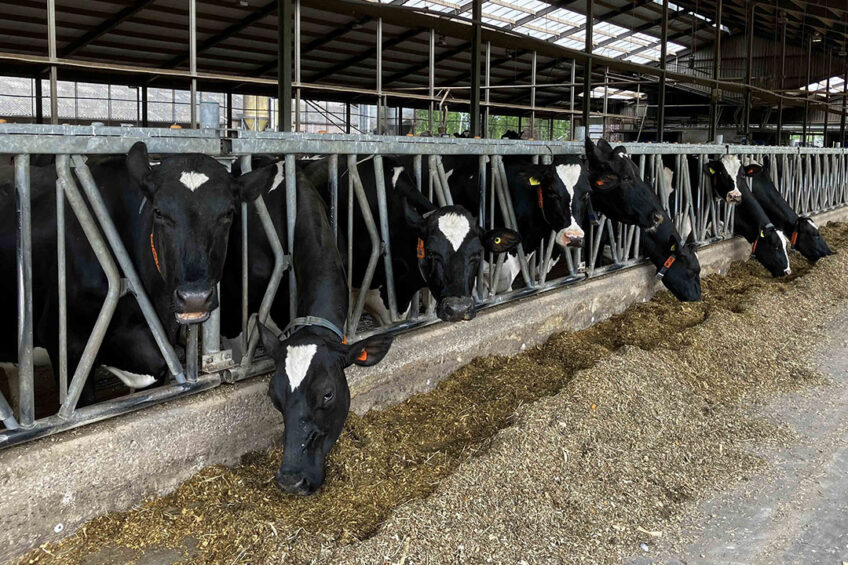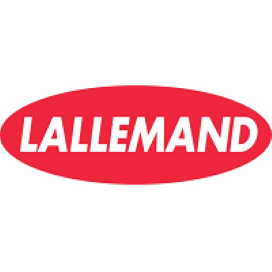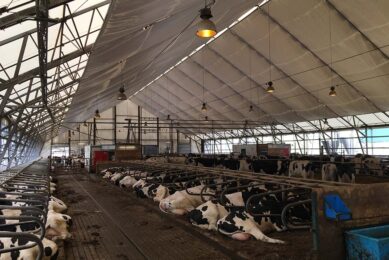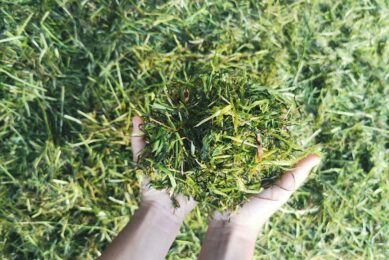From rumen microbes to diet formulation

An interview with ruminant microbiota expert Dr Frederique Chaucheyras-Durand, Research Manager at Lallemand Animal Nutrition – INRAe.
Lallemand Animal Nutrition recently held two webinars about ruminant diet formulation. Internationally renowned experts were invited to share knowledge about the rumen microbiome, fibre digestion kinetics, rumen pH dynamics, and how this information can be integrated into diet formulation tools. We took this opportunity to interview Dr Frederique Chaucheyras-Durand about the role of rumen microbiota in fiber digestion and the potential for diet formulation models.
Could dairy cows produce milk without microbes?
Dr. Frederique Chaucheyras-Durand: Ruminants are totally dependent on their gastrointestinal microbiota, they couldn’t live without it. Indeed, they do not produce specific enzymes able to break down complex molecules from forage, so they rely on their microbiota, located in the rumen, to convert plant biomass into energy, which is thus used for growth or milk production.
Ruminants are therefore called holobionts, which correspond to an assemblage of a host and the microbial communities living in symbiosis.
What are the key players within the rumen microbiota?
The major members of the fibre degrading microbes, also called fibrolytic microbiota, are composed of bacteria, fungi and protozoa. While all rumen fungi are considered highly fibrolytic, only a portion of protozoa and a small fraction of bacteria are really specialised in plant cell wall degradation. Among the bacteria, the most active are Fibrobacter succinogenes, Ruminococcus albus and Ruminococcus flavefaciens, which are actually found in many other herbivorous animals’ gut ecosystems.
How important is fibre degradation for diet modelling?
Forages are commonly used as a substantial part of the diet whatever the ruminant type or geographical location, thus the rate and extent of fibre degradation are key characteristics when considering the nutritional value of a given diet. These dynamic factors are obviously dependent on chemical and physical characteristics of the fibre — but also on microbiota composition, diversity and activities. These factors can be taken into consideration during formulation and can offer more flexibility when selecting from different sources of fibre. Selection can consider these factors and the expected output in terms of nutritional values and income-over-feed costs.

Rate and extent of fibre degradation are key characteristics when considering the nutritional value of a given diet.”
What are the main factors that impact fibre degradation at the microbiota level?
It is crucial to preserve fibre degrading activities of rumen microbiota at an optimal level, to ensure good fibre digestion. Fibrolytic communities are, however, very sensitive to changes in the ruminal environment, such as changes in pH, increases in oxygen levels and high levels of starch. These factors, which are common on farms, may contribute to disrupt the microbial balance and will have a detrimental effect on the fibre degradation process.
Are there positive ways to modify the rumen microbiota?
To counteract the possible negative effects cited above, rumen modifiers such as live yeasts can be used to stabilise the rumen environment and stimulate fibrolytic populations. These live yeasts have the capacity to directly impact colonisation of fibre by fungi and bacteria and promote enzymatic activities, which consequently increase NDF digestibility in the rumen.
Are you able to quantify this impact up to milk production?
Numerous animal studies have indeed shown improvements in fibre degradation (NDFd) — which reflect a promotion of rumen fibrolytic microbiota activity — with the supplementation of a specific live yeast product such as Saccharomyces cerevisiae CNCM I-1077 (Levucell SC). Because NDFd is improved, and pH is stabilised at the rumen level, milk production is increased. A submodel developed recently with all these biological data allows us to predict the benefits to feed efficiency and milk production that can be expected with the use of Levucell SC, and it can be included in various nutritional software and models.




